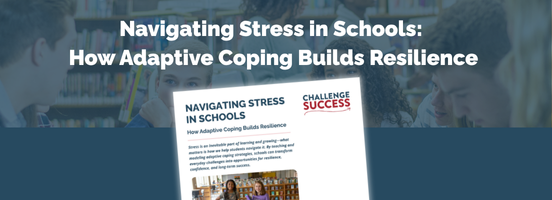This piece first appeared in the Silicon Valley Local magazine.
“I want to be happier. I just don’t know how.” In my work as faculty, presenter and leadership coach, I hear this confession from adults, 18-80. We live complex, stressful and often disconnected lives, often bombarded by media that convinces us that buying all kinds of stuff will make us happy, beautiful, successful, prestigious, and even more loveable individuals. Sometimes it does, in the short run. The real problem, however, is that this media-created trance can blunt our quieter universal quest for deeper joy and kindness. But there is very good news. Deep happiness is within reach.
By peering into the lives of the happiest people, we can discover the research-based secrets about the quality of “happiness.” What makes the happiest people more joyful and kinder?
Let’s begin with your unique life. Take a “time-in” and think about this: What makes you happy? Stop reading, make your complete list, and when ready, place your experiences within these 3 categories:
- SHORT TERM PLEASURES: Feeling the rush of sensory pleasures, such as great food and wine, great sex, sports, entertainment, is terrific. The happiest people intentionally organize their lives so they have time to kick back and enjoy life. But here’s the catch- these experiences are fleeting. We want more, we crave more, and we’re bombarded by media that encourage us to get out there and grab “more” pleasure. But the problem is that our brains have faulty wiring. The harder and stronger that we pursue that great rush of pleasure, the more we want. The more we want, the more unhappy we become. And as unhappiness soaks into our day, the more gratification we seek to avoid the discomfort and find another pleasure jolt. Whether the rush comes from food or drugs; money or prestige; gambling or overwork, this downward cycle inevitably leads to discontent, social comparison, restlessness, depression and even addiction. Enjoy those healthy fun pleasures, but understand that they alone will not result in sustainable happiness and contentment. Sorry!
- FLOW: Does your “this makes me happy” list include experiences that lead to that zesty feeling of a “YES” fist pump? Maybe you love untangling complex coding problems, mastering a new level of communication skill or fixing a gnarly machine? This great feeling of accomplishment, called “flow”, sparks curiosity, adds vitality and helps us thrive. The happiest people deliberately seek out engaging challenging experiences and they love achieving new levels of mastery. But here’s the secret: Those happy folks also know how to fail! Why? Inevitably, the “flow” urge prompts us to take new risks and step out of our comfort zone. And what do we find there? When we outgrow our current competency level, we hit the “don’t know how” zone, which feels like incompetence or a setback. If we stick with it – keep trying, and keep failing, the time will arrive when we mastered the new skill set and we experience the great feeling of flow. The happiest people understand that gaining mastery requires resilience- to bounce back after a setback or failure, and eventually enjoy that great experience of flow. Nelson Mandela reminds us that “the greatest glory in living lies not in never falling, but in rising every time we fall.” Flow, being fully engaged, mastery. These are powerful ingredients for deep life satisfaction.
- MEANING: Did your list include connecting with others, offering compassion, being kind to yourself? Meaning is the real sweet spot for the happiest people. Happy people know how to notice and savor the good that surrounds us so often in our day. Think about this – if you hang out in the zone of negativity or threat or stress, you’ll find something to criticize in almost every second. The happiest people chose to be happy – they deliberately focus on and seek the positive benefits of each moment. We call this a positive mindset. But here’s the trick- life is never trouble free. Even the happiest people also struggle and face disappointment and adversity. They understand that pain is part of life too, and deep meaning and purpose arise when we deliberately reframe life’s difficulties into opportunities for meaning and compassionate action. Viktor Frankl, Holocaust survivor, reminds us: “Everything can be taken from us but one thing: the last of human freedoms – to choose one’s attitude in any given set of circumstances, to choose one’s own way.” Meaning isn’t an abstract or general life principle. It’s a vibrant, deliberate frame of mind that recasts life’s inevitable difficulties into purposeful thought and action. Almost nothing imbues our lives with meaning and purpose as intensely as when we contribute to the happiness of others and when we treat others and ourselves with kindness and patience. The Dalai Lama teaches, “If you want others to be happy, practice compassion. If you want to be happy, practice compassion.”
Happiness IS within reach. Enjoy life’s healthy pleasures. Challenge yourself to grow, engage with life and master new accomplishments and skills. Above all, discover your unique capacity to bring greater joy and meaning to your personal life, as well as to the greater good of our communities. When you seek opportunities to help others and heal the world, you’ll find that you will truly flourish as your days will be imbued with wonderful sensual pleasures, inner peace, meaning and purpose. And that’s the open secret to deep, sustainable happiness.
Carole Pertofsky is the Director of Stanford University’s Wellness and Health Promotion Services at the Vaden Health Center. She teaches the courses “Health Promotion and the Campus Culture” and the “Pursuit of Happiness and Health”, and engages students in teaching, research, and community service and outreach. Carole has served as a Challenge Success advisor since its inception and is also the co-founder of the Spiritual Tools for Healing Center, a cancer survivors’ support network in the East Bay.
